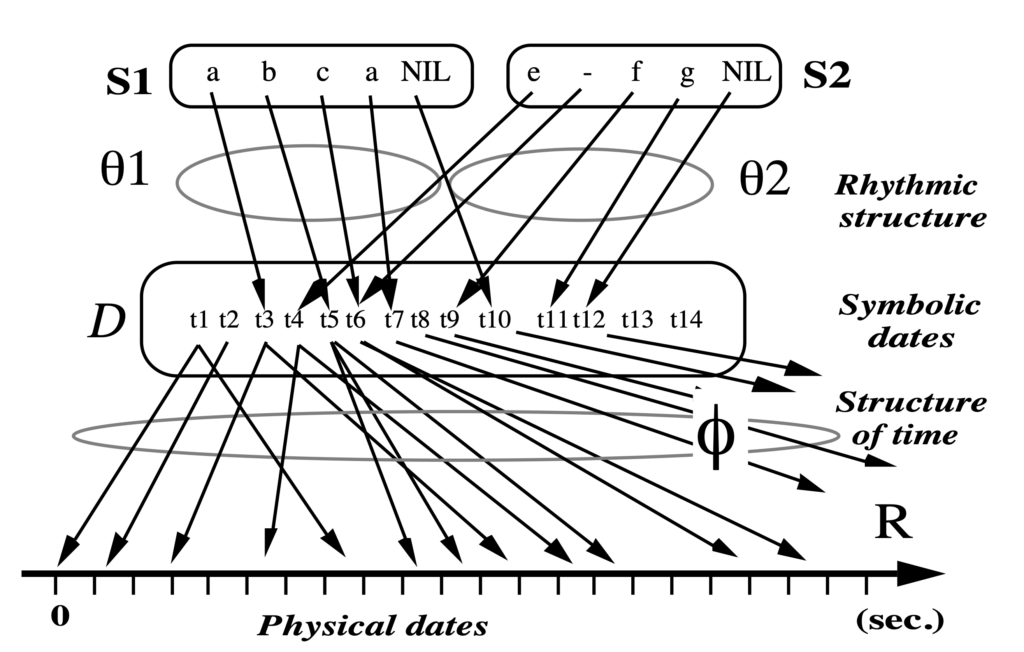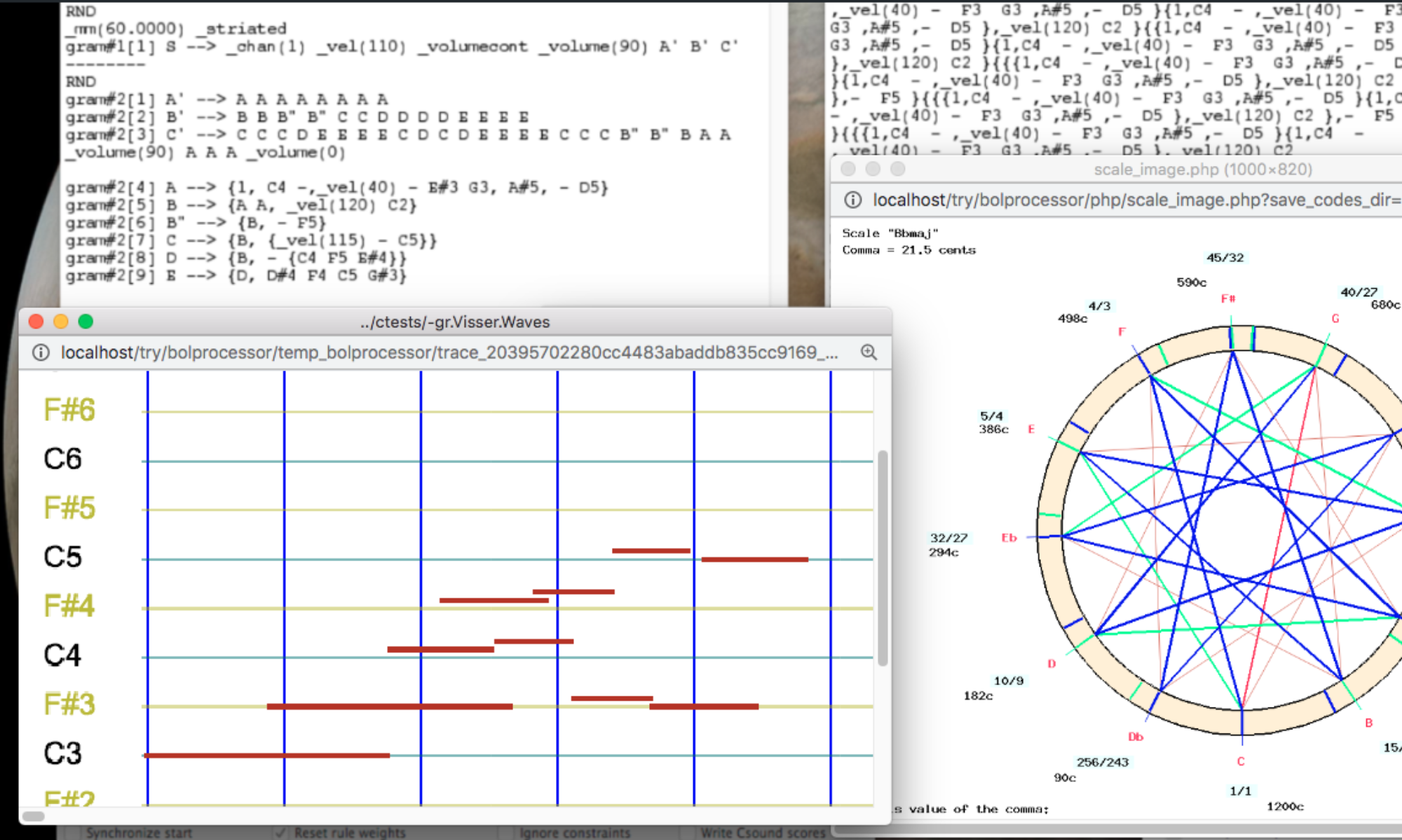Bernard Bel
A contribution to The Ratio Symposium, 14-16 Dec. 1992, Den Haag (The Netherlands). Published in Barlow, Clarence (ed.) The Ratio Book. Den Haag: Royal Conservatory - Institute of Sonology. 2001: 86-101. This paper is referenced on HAL ⟨hal-00134179⟩ and quoted in Polymetric structures.
Abstract
This paper deals with various problems of quantifying musical time that arise both in the analysis of traditional drumming and in computer-generated musical pieces based on "sound-objects", i.e. sequences of code that control a real-time sound processor.
Section 1 suggests that syntactic approaches may be closer to the intuitions of musicians and musicologists than commonly advocated numerical approaches. Furthermore, symbolic-numerical approaches lead to efficient and elegant solutions of constraint satisfaction problems with respect to symbolic and physical durations, as illustrated in Sections 2 and 3, respectively.
Excerpts of an AI review of this paper (Academia, June 2025)
Summary

In this manuscript, the author explores the computational and music-theoretical challenges of quantifying musical time, focusing particularly on North Indian tabla drumming and computer-generated pieces. The paper proposes two major frameworks: (1) a syntactic approach using grammar-like rules to capture how traditional drumming patterns can be generated or validated, and (2) a symbolic-numeric approach to describe polymetric structures and time-setting algorithms in a systematic way. By modeling musical accentuation and duration with grammars, the author demonstrates how certain “words” or “bols” can be substituted and permuted within rhythmic templates, offering an approach that mirrors actual performance practices while aligning with formal language theory. In addition, a symbolic-numeric scheme detailed through the Bol Processor system provides a flexible means to define, superimpose, and instantiate polymetric structures, bridging theoretical formalism with real-time performance demands.
Strengths
- Clear Integration of Theory and Practice: The manuscript successfully demonstrates how grammars, commonly associated with linguistic theories, can be adapted to represent and generate rhythmic sequences. This is particularly clear in the sections on North Indian tabla improvisation, where syntactic constraints help reflect the nuanced accentuations seen in practice.
- Comprehensive Treatment of Polymetric Expressions: The author provides a thorough explanation of handling nested or simultaneous meters. The approach not only deals with symbolic durations but also with computational details such as tempo markers, creating a strong link between mathematical formalisms and real-world musical notation.
- Application to Real-Time Performance: By integrating a time-setting algorithm that manages both local and global “drifts,” the paper offers a pragmatic method for scheduling and overlapping sound-objects in actual performances. This concreteness in explaining the interplay between theoretical constructs and execution in software (Bol Processor) is valuable.
- Interdisciplinary Perspective: The paper spans fields of ethnomusicology, computer science, and music composition, illustrating rigorous ways to encode music traditions that rely on oral transmission. Such a cross-disciplinary approach will likely appeal to readers with interests in computational creativity, ethnomusicology, and artificial intelligence in music.
Conclusion
Overall, the paper offers a solid presentation of how syntactic rules and symbolic-numeric formalisms can be synergistically employed to account for complex rhythmic structures in both traditional and computer-generated music. The method successfully translates analytical insight from oral traditions into a computational setting, opening avenues for further research and creative applications in automated music generation and performance systems. The inclusion of extensive examples, grammar details, and algorithmic descriptions provides clarity, showing how the theory unfolds in practice.
Skip to PDF content